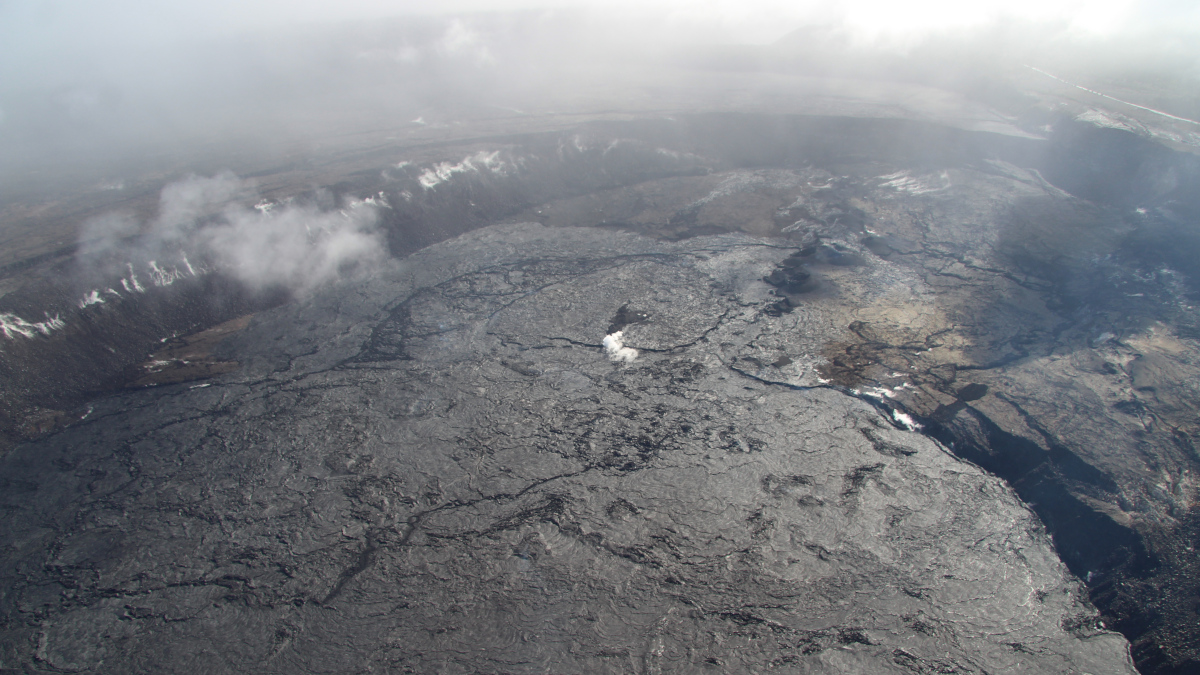(BIVN) – The USGS Hawaiian Volcano Observatory has now settled into producing weekly updates on Kīlauea volcano, now that the summit eruption has ended.
HVO will issue the updates on Tuesdays until further notice.
From the September 26th update:
Activity Summary: Kīlauea volcano is not erupting. No significant changes have been observed at the summit or in either rift zone since the summit eruption that began on September 10 ended on September 16. Future eruptions at Kīlauea’s summit remain possible and HVO continues to monitor activity. HVO will issue weekly Kīlauea updates on Tuesdays until further notice.
Summit Observations: Overnight webcam views showed sparse incandescent spots as lava erupted from September 10 to 16 continues to cool on the downdropped block and Halemaʻumaʻu in Kīlauea’s summit caldera. It is unlikely that the recent eruption will resume based on the behavior of past, short-lived summit fissure eruptions at Kīlauea summit in 1982, 1975, 1974, and 1971, which all ended abruptly. Summit seismicity has remained low, with very few earthquakes over the past week, and tremor is at background levels. Summit tiltmeters recorded net inflation over the past week. Sulfur dioxide (SO2) emissions have decreased to near background levels and were measured at a rate of 150 tonnes per day on September 25. Information on the recent Kīlauea summit eruption is available at (this website).
Rift Zone Observations: No unusual activity has been noted along the East Rift Zone or Southwest Rift Zone; steady rates of ground deformation and seismicity continue along both. Measurements from continuous gas monitoring stations on the middle East Rift Zone remain below detection limits for SO2.
Hazard Analysis: Levels of volcanic gas (sulfur dioxide and carbon dioxide) can remain locally hazardous even though Kīlauea is no longer erupting. Sulfur dioxide (SO2) gas emissions have greatly decreased; however, local concentrations of sulfur dioxide (SO2) or hydrogen sulfide (H2S) may persist in downwind areas, and residents may notice odors of these gases occasionally. Significant hazards also remain around Halemaʻumaʻu from crater wall instability, ground cracking, and rockfalls that can be enhanced by earthquakes within the area closed to the public. For discussion of Kīlauea hazards, please see (this website).
The Current Volcano Alert Level for Kīlauea is at ADVISORY. Observatory scientists will continue to closely monitor the volcano for any changes in activity.


by Big Island Video News6:50 am
on at
STORY SUMMARY
HAWAIʻI VOLCANOES NATIONAL PARK - The recent summit eruption is unlikely to resume, scientists say, based on the behavior of past.